Yesterday morning I was flicking through my Steemit feed and came upon an excellent post from @pennsif here about the wonderful techniques of creating soil in bulk in Wales. I was so impressed with the effort that went into this writeup that I decided to invest some overdue effort into our little garden; something that's been on the to do list for a while now.
Why We Pot
We're luckier here in terms of soil quality so there's not the need for bulk soil creation. We do however opt to avoid for the most part directly planting into the earth for a few reasons that I've mentioned in previous posts.
- We choose to rent our property rather than to purchase. This brings a level of variability in terms of where we live and we don't want to invest resources into a garden that is no portable.
- On occasion we are subjected to weather extremes. Perhaps not extreme for the individual but for food producing plants it's another story. From flooding to hail storms, plants can easily become drowned or shredded and a permanent position in the ground provides no protection from this.
- A potted garden allows for adjustment of position for best sun or shade exposure, especially as the seasons change.
- Movement closer to water is possible in drought conditions such as those we've recently had. I'll talk about that shortly.
As a result, we've always enjoyed potting our plants. This does mean that longer growing and larger variants such as fruit trees are not something we can easily accommodate for but the benefits outweigh this downside. Besides, there's nothing wrong with doing both, opting to plant some trees directly into the ground in addition to the potted body of plants.
Anyway, as many of our plants are potted, we too on occasion like to provide the plants with fresh material. The first picture for this post illustrates one of the points above. Currently our garden is co-located with our little dam. We've just finished a period of drought where we didn't have a drop of rain for something like 2 - 3 months. Being on tank water here means that water needs to be preserved for essentials such as drinking; for both us and the animals. Moving the pots down to the dam meant that we could water the plants daily from the free water supply there.
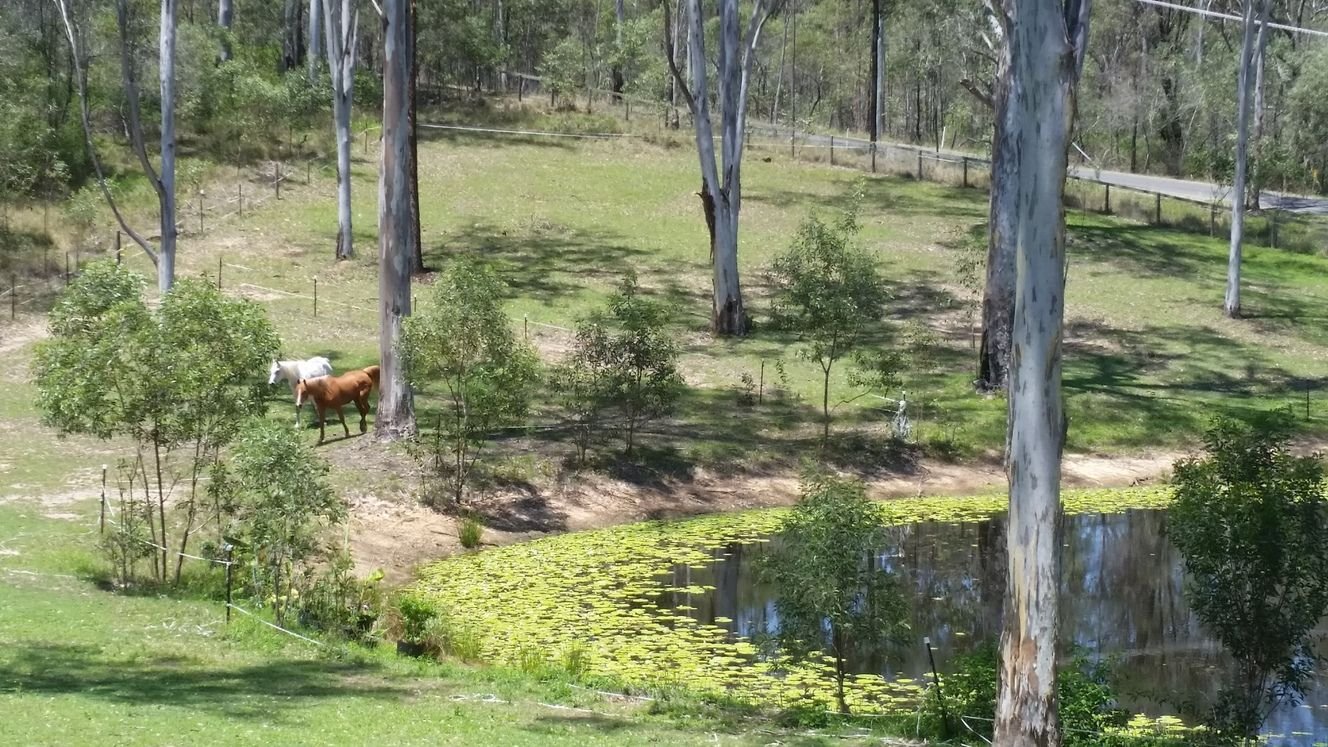
Our little pots are at the lower left hand side of the body of water, somewhat obscured. You can see how far down the water level still is after the period of no rain we've just suffered.
Our Fertiliser
Now Pennsif wrote about a number of clever ways to create soil from composting various materials. Because we have the two hay-burners pictured above, our primary source is manure. We've had great success composting this along with our secondary source, kitchen scraps. In fact some of the plants we have now including a large number of capsicum seedlings have grown simply from the scraps we save from the kitchen.
We collect the manure from time to time in Hessian bags, actually the bags you buy chaff in from the produce store. We've let them sit so that the manure can degrade. We've learned a recent lesson here. Although these bags are convenient to carry around when collecting, they don't stand up to the elements. Some have ripped apart just under their own weight and another tore to dust when we tried to pick it up to use.
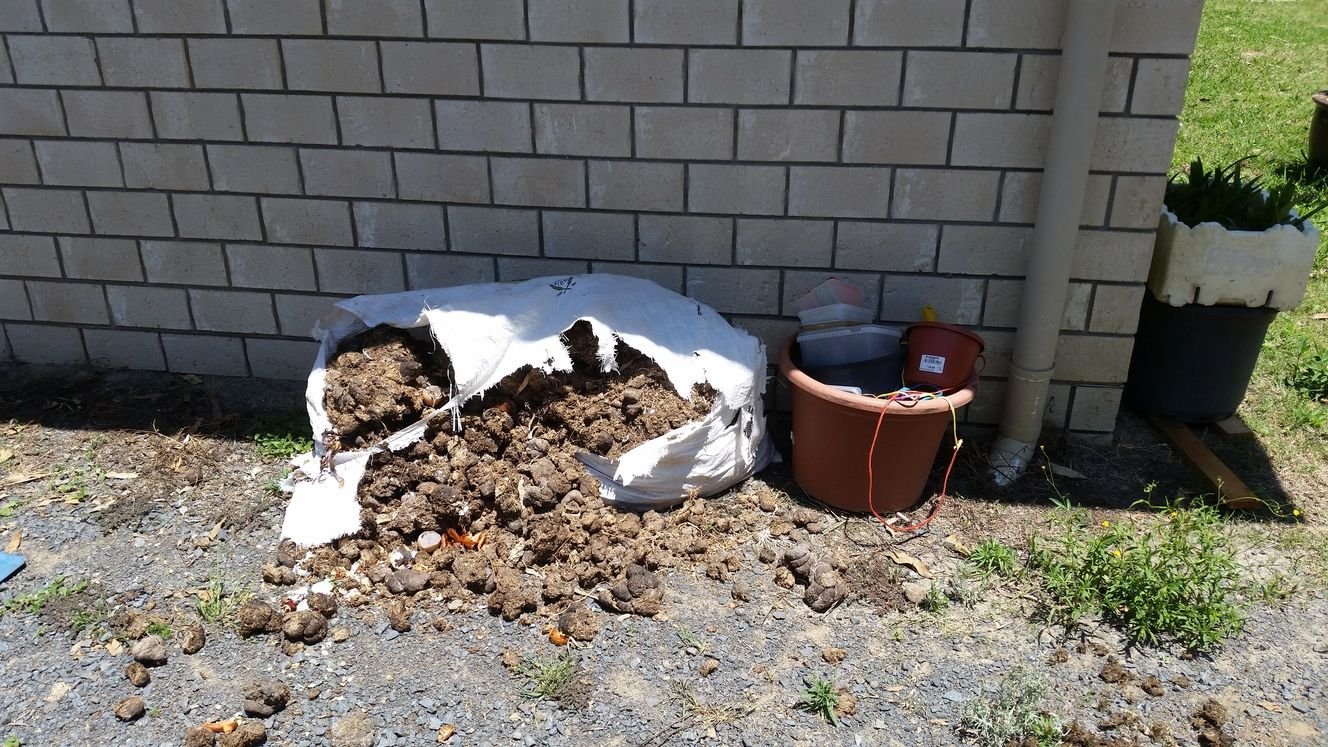
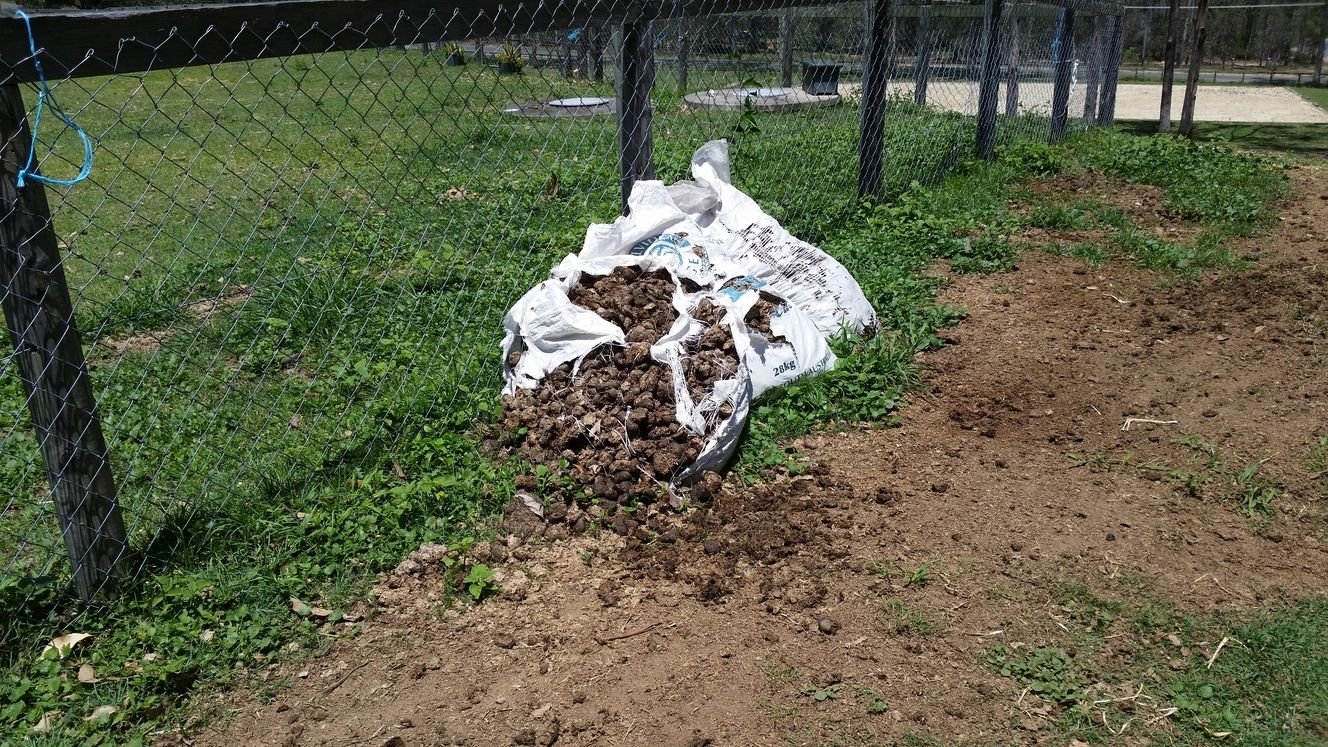
One lives and learns. Yesterday then, we moved the contents from one of these bags to a plastic bin and wheeled it down to the garden to put to use. Often you'll see the manure lose form and turn to dry healthy soil. Sometimes it needs a little help. I had a shovel which I used to loosen up the clumps in order for the manure to flake apart. The smell from this is rich and healthy. It's not at all manure like and I best liken it to opening a fresh bag of potting mix from your garden center.
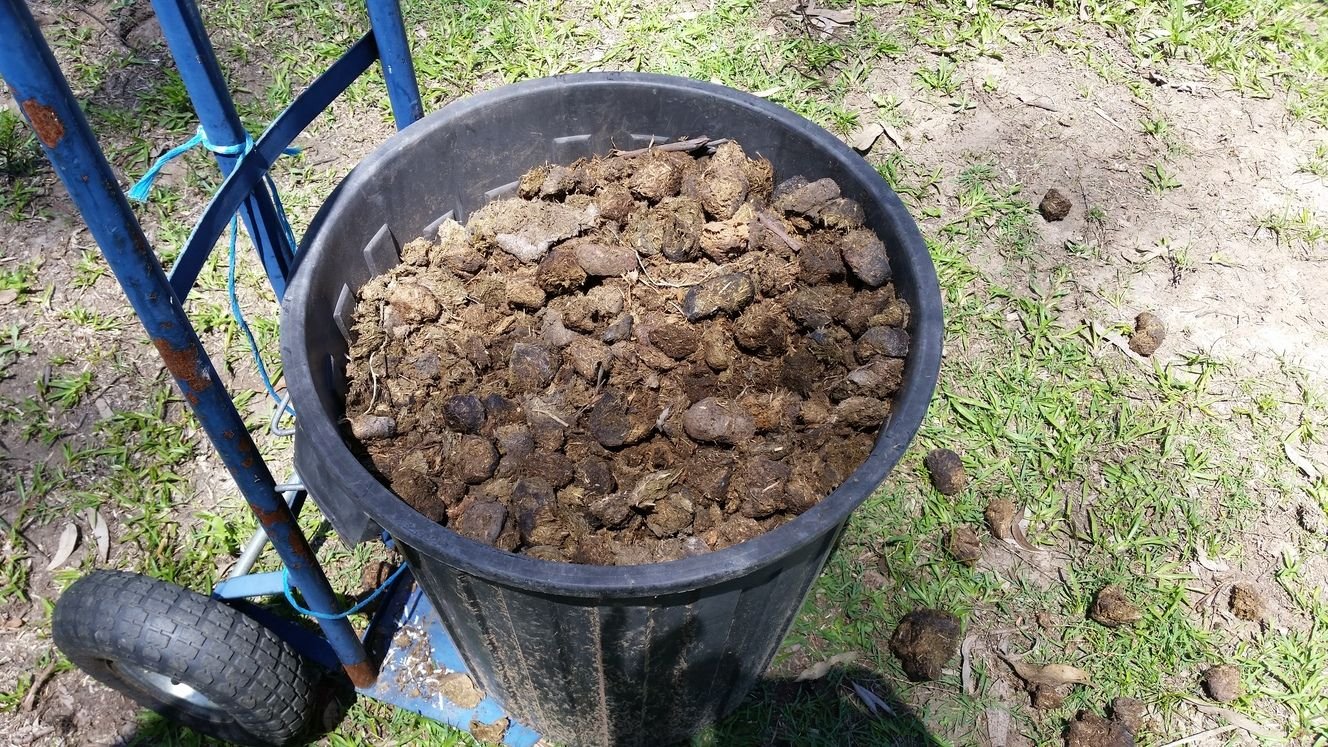
Clumps like this can be great for starting out a new pot but we were after fine soil to top up our potted plants with. Finer mixes allow for better penetration through the ground and down to the roots so a little breakup with a shovel was required for the top layers.
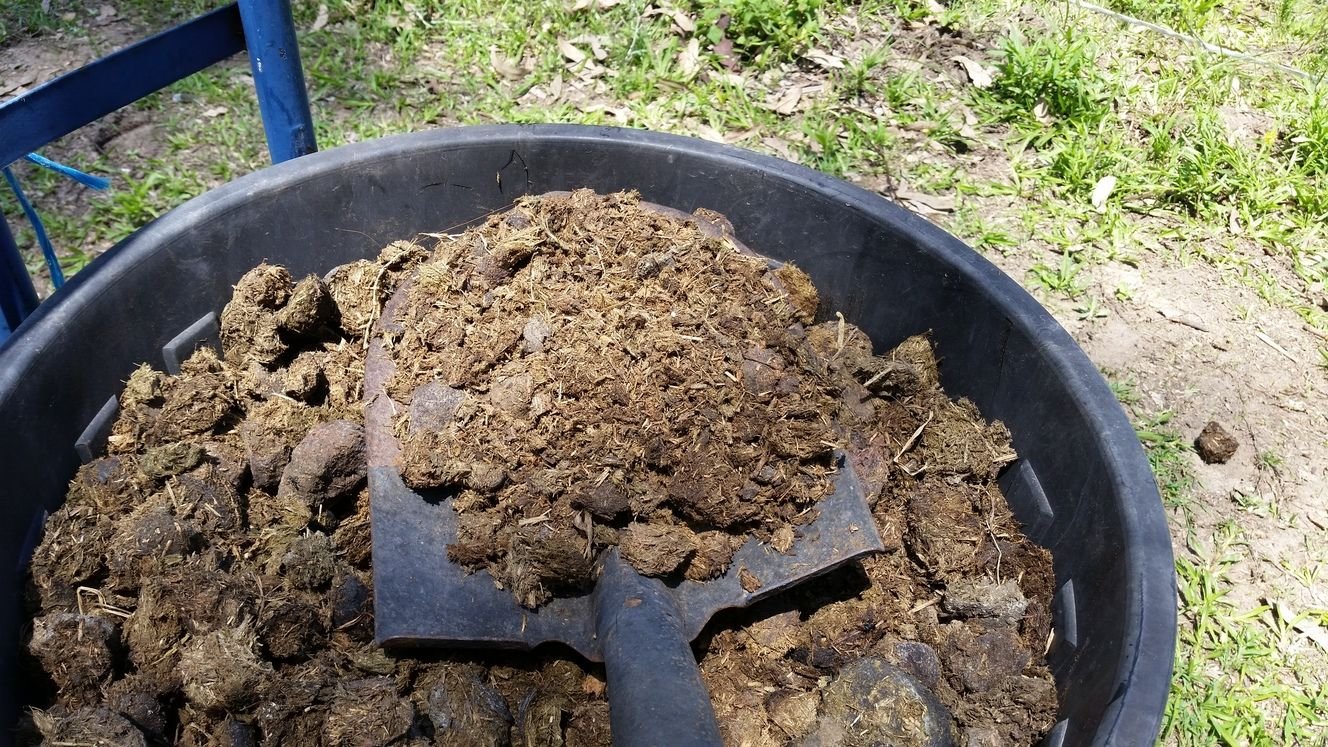
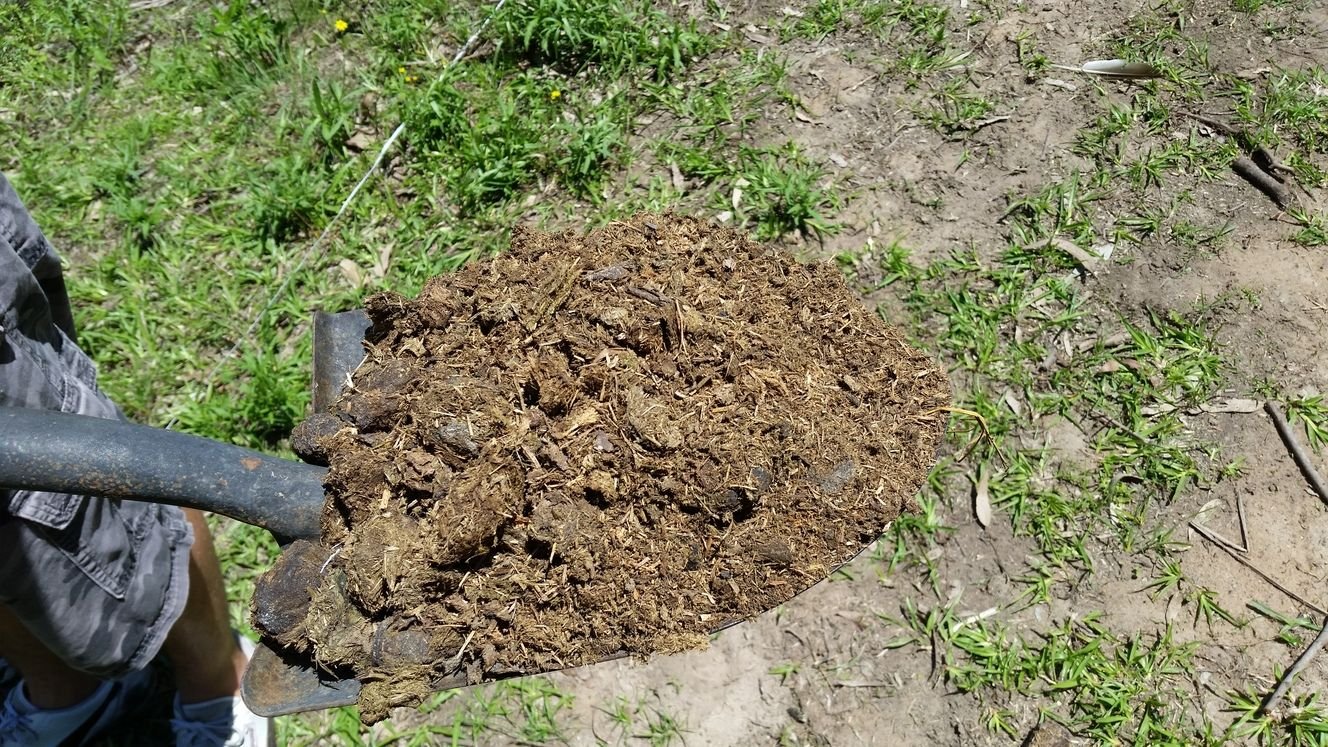
It doesn't take long to get a fine mix from the composted manure and mostly, what's under the surface is like this anyway.
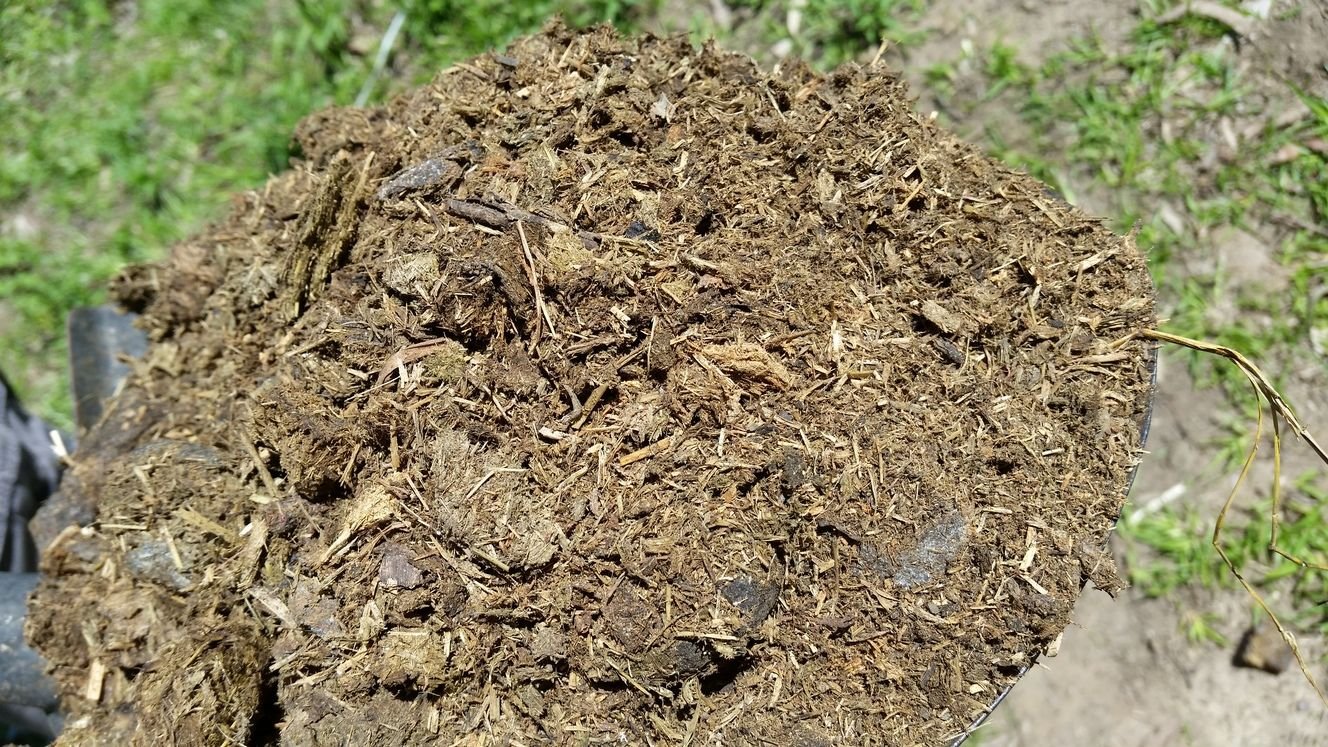
Work Still To Do
As an aside, we have access to plenty of grass and weeds that we could also use but we find this to be more labour intensive and more likely to produce germinated grass or weed seeds in the final product. Here's one of our embankments with a fresh cover of grass and weeds after the rain. We like to retain all the grass to give the horses choice. I never really understood the effort people go to in terms of mowing when they own horses that could have benefited from the grass cover.
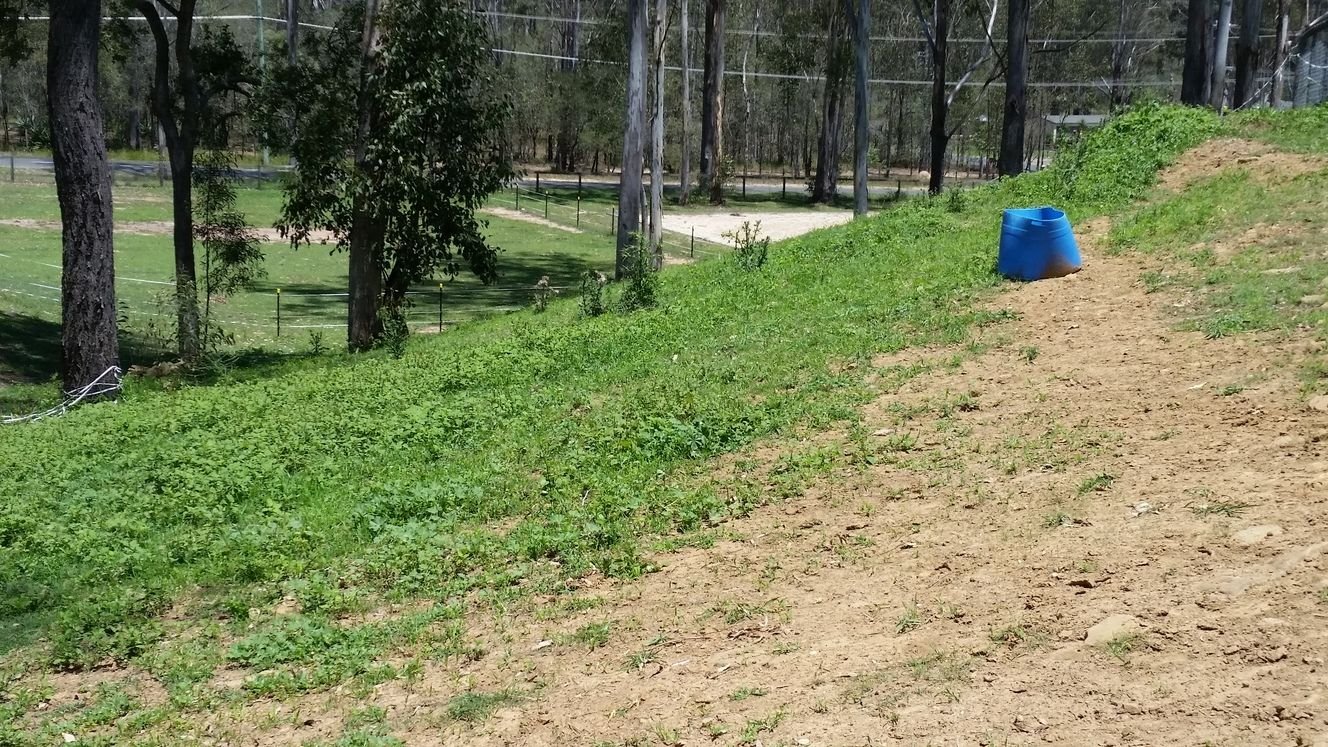
We use the composted manure rather than clippings, although I'll need to get the trimmer out soon before this gets unmanageable during the summer.
The Maintenance Begins
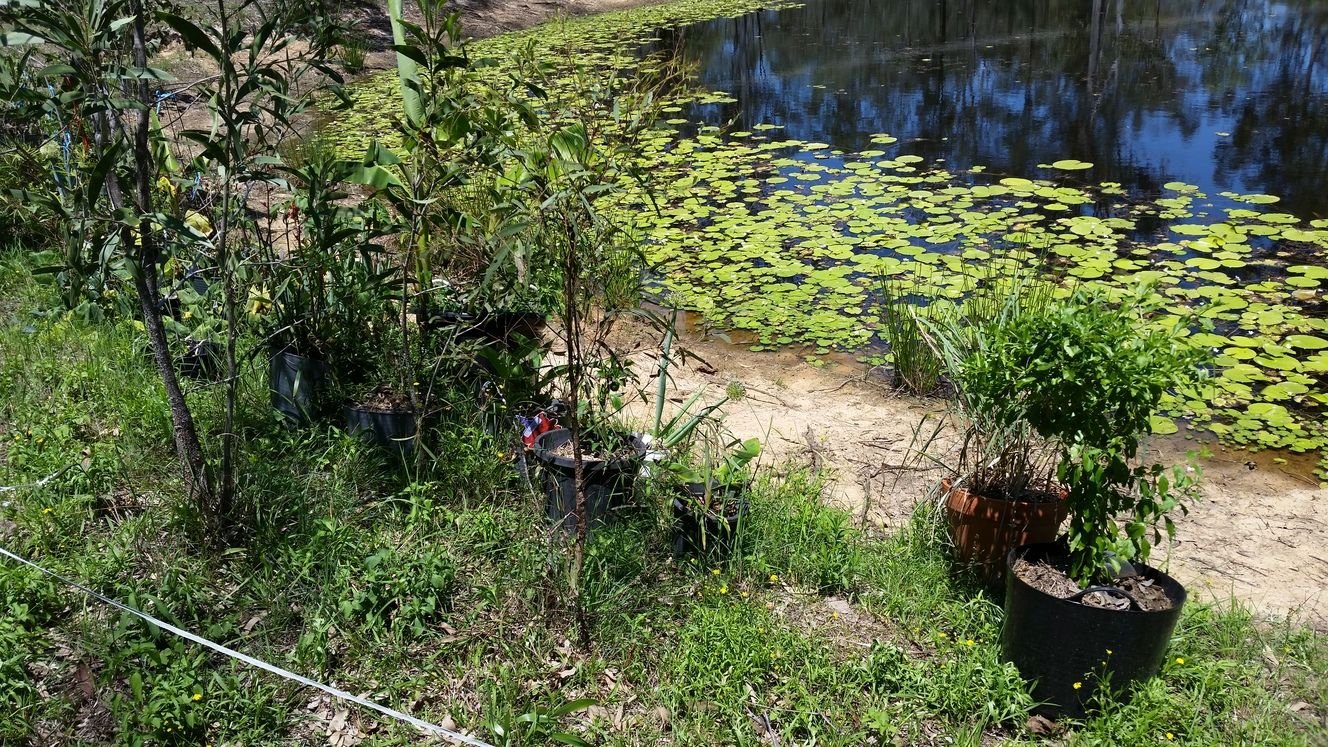
So... here is our little hidden away garden. There's been some rapid growth since the recent rain so it looks a little unmaintained and to some extent, that's true. For a few reasons, this needed tidying:
- Foreign growth in the buckets can rob the plants of light and nutrients.
- Heading into the warmer season now, snakes are prevalent here in Australia. As chance would have it, we spotted a small one while working. A good example of how careful one must be when they come out of hibernation.
A Gorgeous Snake Pays Us A Visit
Here's a short video of the snake who made his way promptly to the water (they're great swimmers!) and then back to land to slither away. I'm actually not sure what species this guy was. Possibly a green tree snake but there's a copper or red tinge to him so perhaps he was something more dangerous. If in doubt, keep away.

A short video of the small snake who joined us during our gardening...
Geisha Girl Happy With Her New Manure Based Soil Cover
Ok, so back to work. Here's an example of our Geisha Girl before the top up, and then afterwards. We try to keep the tree stem clear of fill so as not to cause rot. It also means the nutrients are distributed more towards the outside of the pot where the roots are.
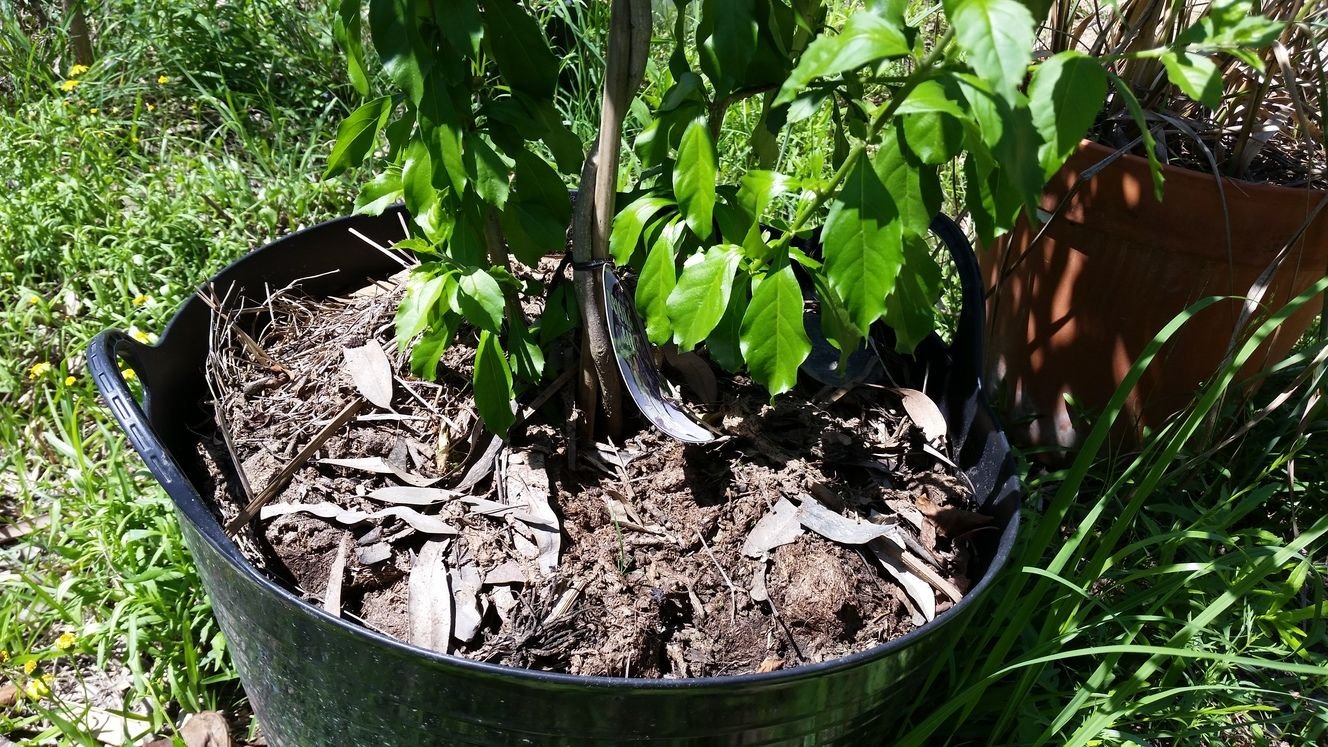
Before the manure top-up. You can see old straw that we once placed over the tops as mulch. This helps to diversify the organic material over the soil, keeps moisture in and reduces light over the surface which retards the growth of grass or weeds.
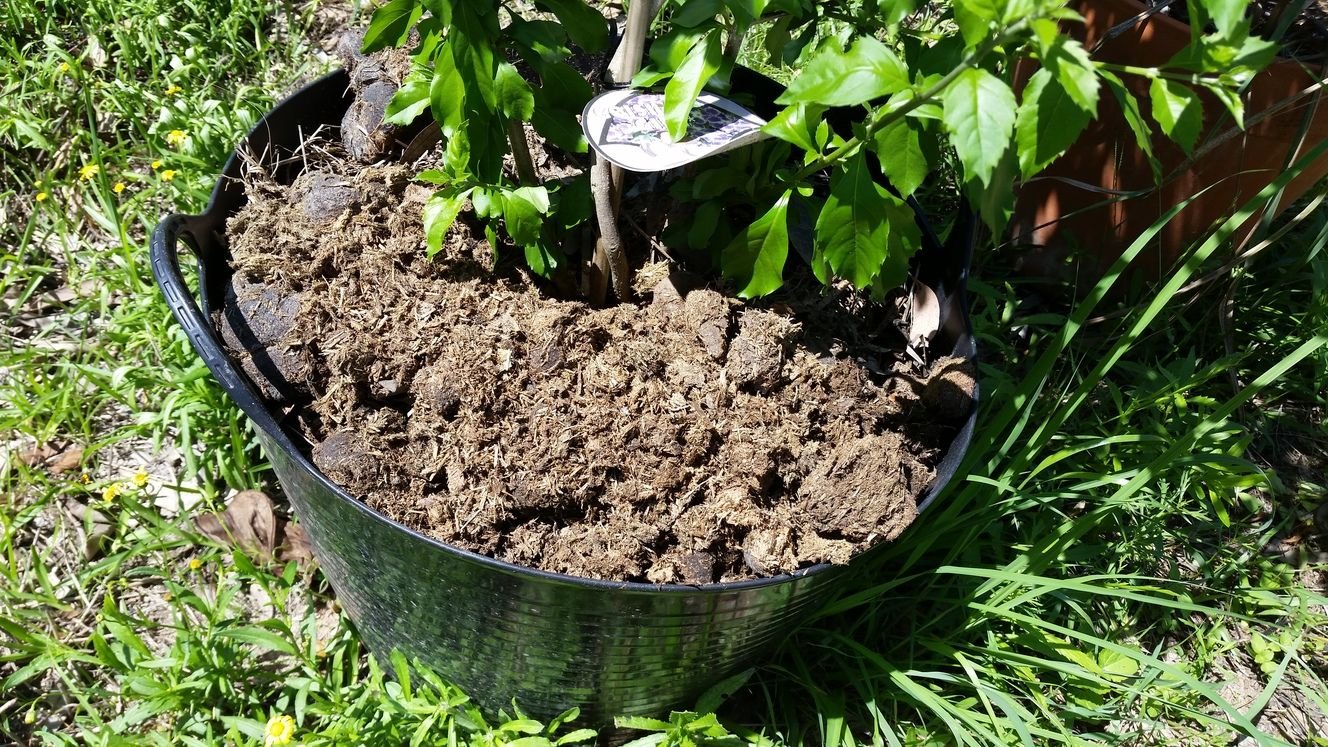
After the top-up. Looks much more maintained and healthy!
Spring Onions
Below you can see the spring onions (or eschalottes) benefiting from the manure top up. These are hardy growers. In fact as you can see in the picture, they are currently flowering; something we've been hoping for for some time. Remarkably, these spring onions were grown from discarded roots that we had purchased from a supermarket. Most people would throw the bases out but we decided to try them in a pot and we've never had to buy spring onions since! Before this photo, the bucket was only half full with soil so they don't require much at all to grow in.
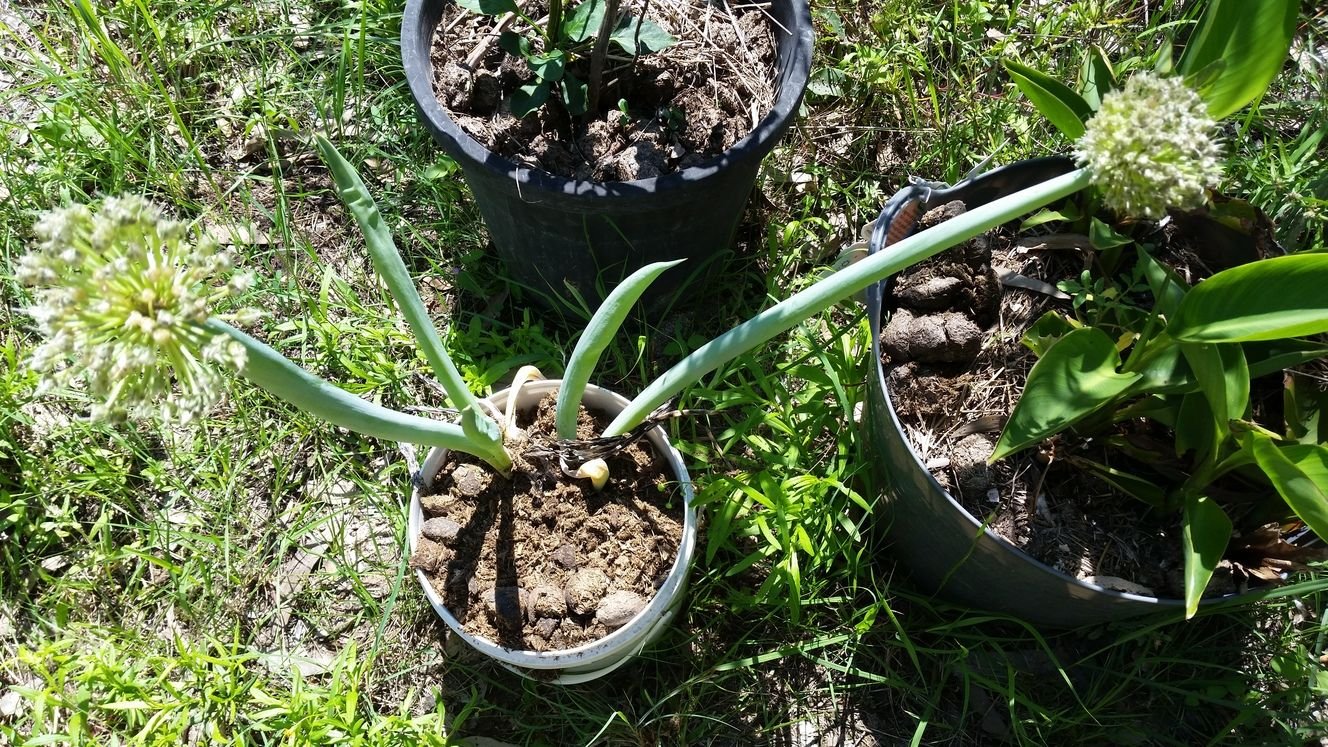
Lady Finger Bananas Receive Some Much Needed Attention
Next comes an example of what can happen if you leave your garden maintenance for too long. Look at what this young lady finger banana plant has had to deal with. The grass that was growing in its pot had become bigger than the plant itself. Indeed we had to uproot the whole lot to untangle the roots and replant the banana. These bananas are resilient growers too and it's a good thing. In fact we received these as stumps from a friend who can't get rid of them fast enough from his garden. He even mows over them with a lawn mower and they just spring back up again. Selecting plants that are hardy is a good move to make.
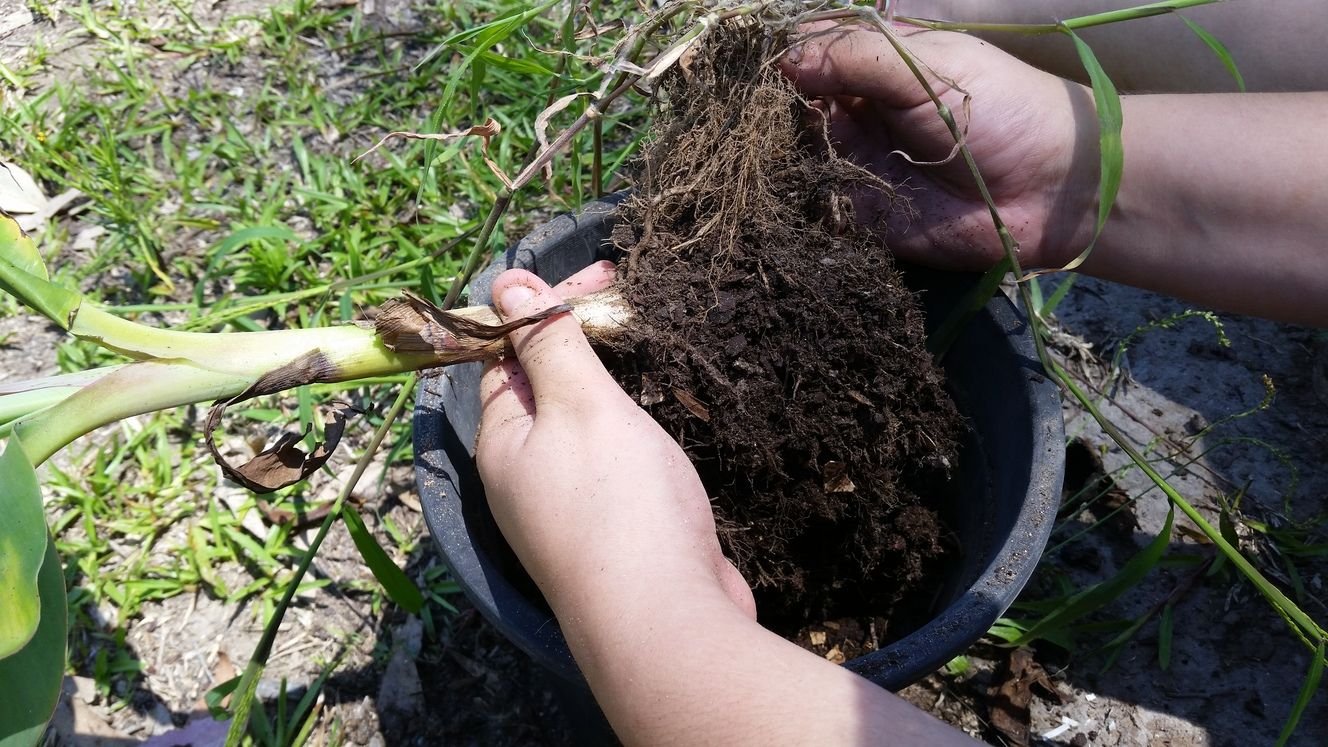
The roots were tangled in with the grass
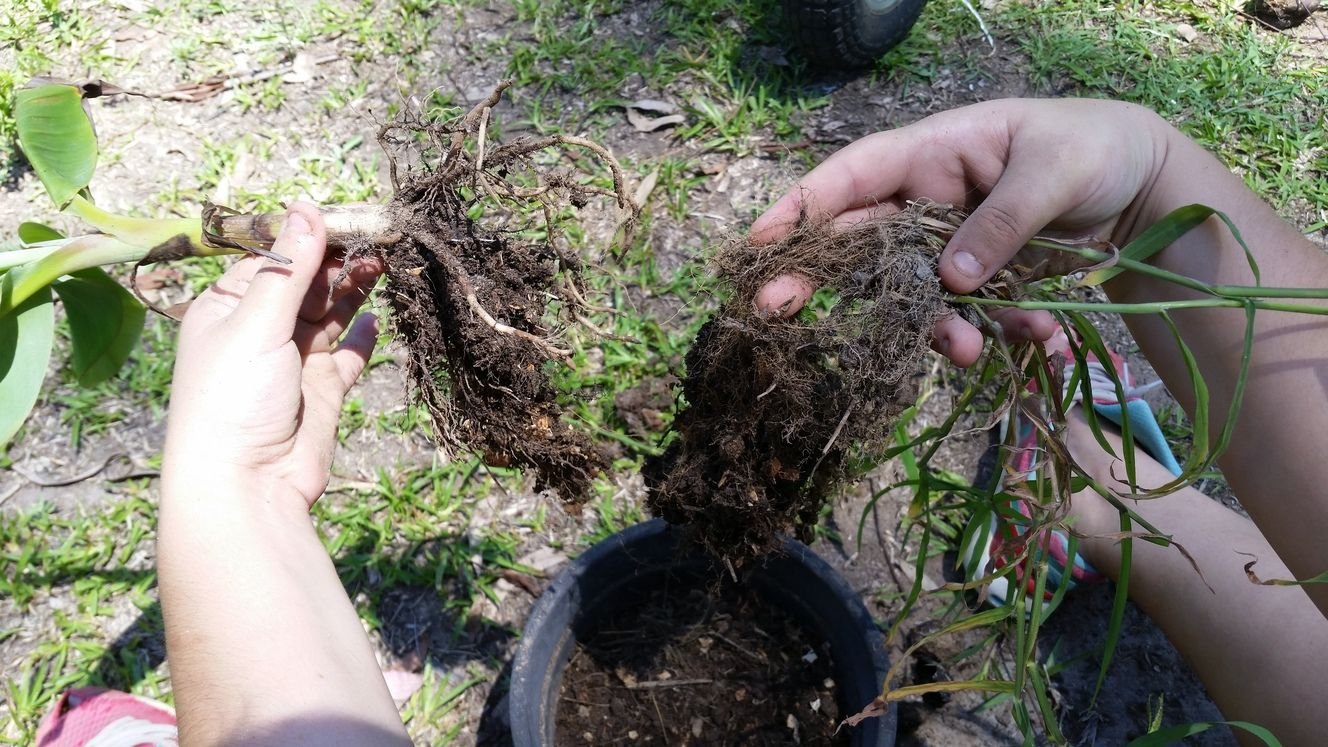
Surgery was required
An even better example of our sadly neglected lady finger bananas. These two were also grown from dead looking stumps that were given to us. Look at the vibrant colour despite their pot being filled with foreign growth. Subsequently pictured is what we were able to pull from the pot and thereafter what it looks like after our manure / soil top-up.
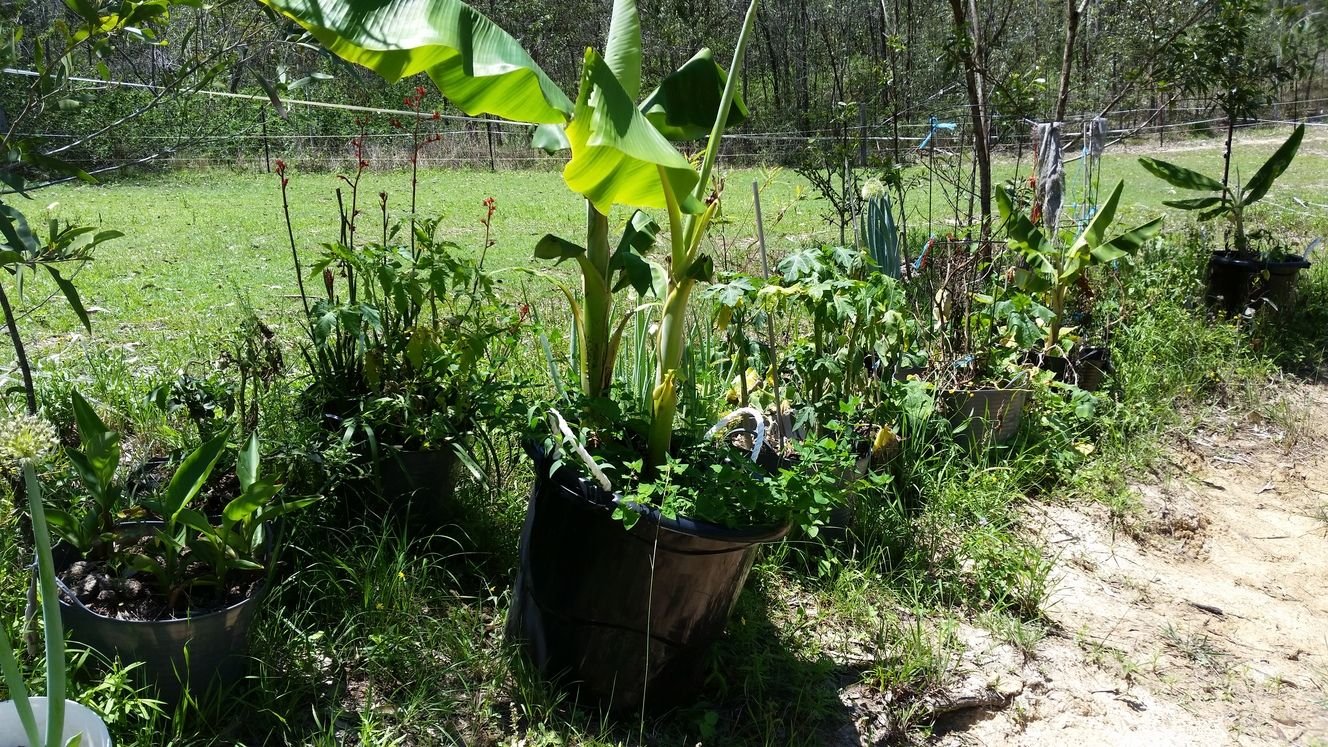
Lady fingers before
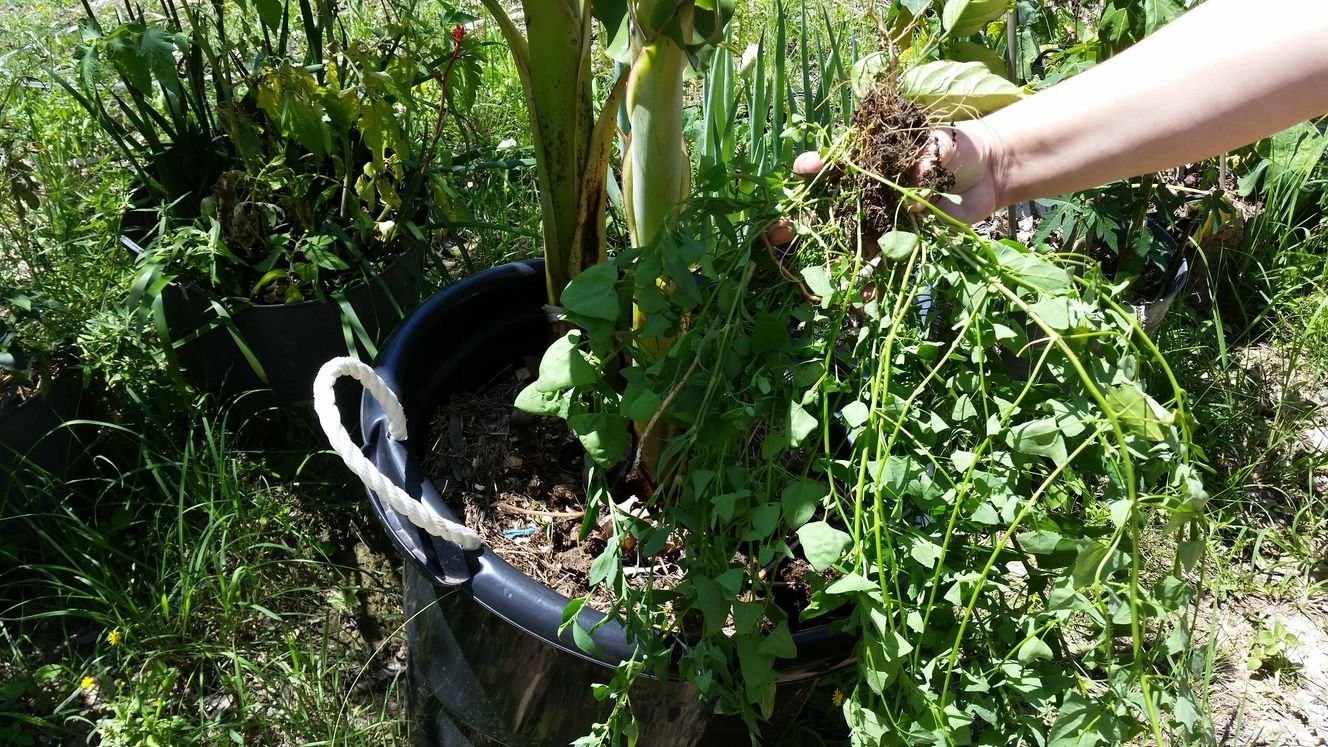
Lady fingers during
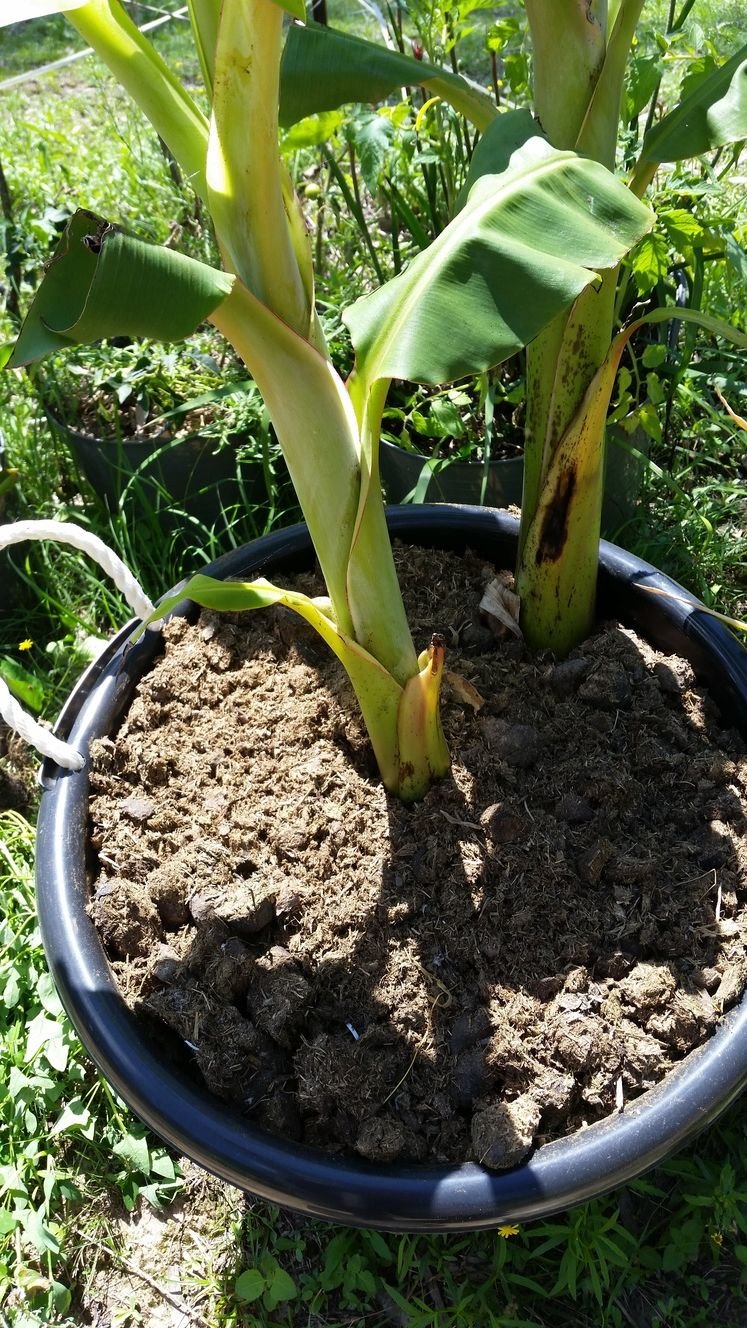
Lady fingers after
Pawpaw Needs More Space
Next we move on to our ever growing pawpaw plants. These we put no effort into simply because they grew surprisingly from seed. As mentioned before, we keep our kitchen scraps and sometimes we get a surprise. Often they grow in from seed that we've composted directly yet other times we'll get growth from manure that's passed through the horses. Seeds will remain in tact and germinate after having passed through the animals. Isn't nature amazing!
Because these grew from seeds, we had a number of now sizable plants growing close together in the same pot. It was certainly time to give some of them their own space. The root system is amazing. They look like carrots with thin wizard beards made of roots when you pull them out. We replanted only a few of these (three or so) just to check that they would take OK.
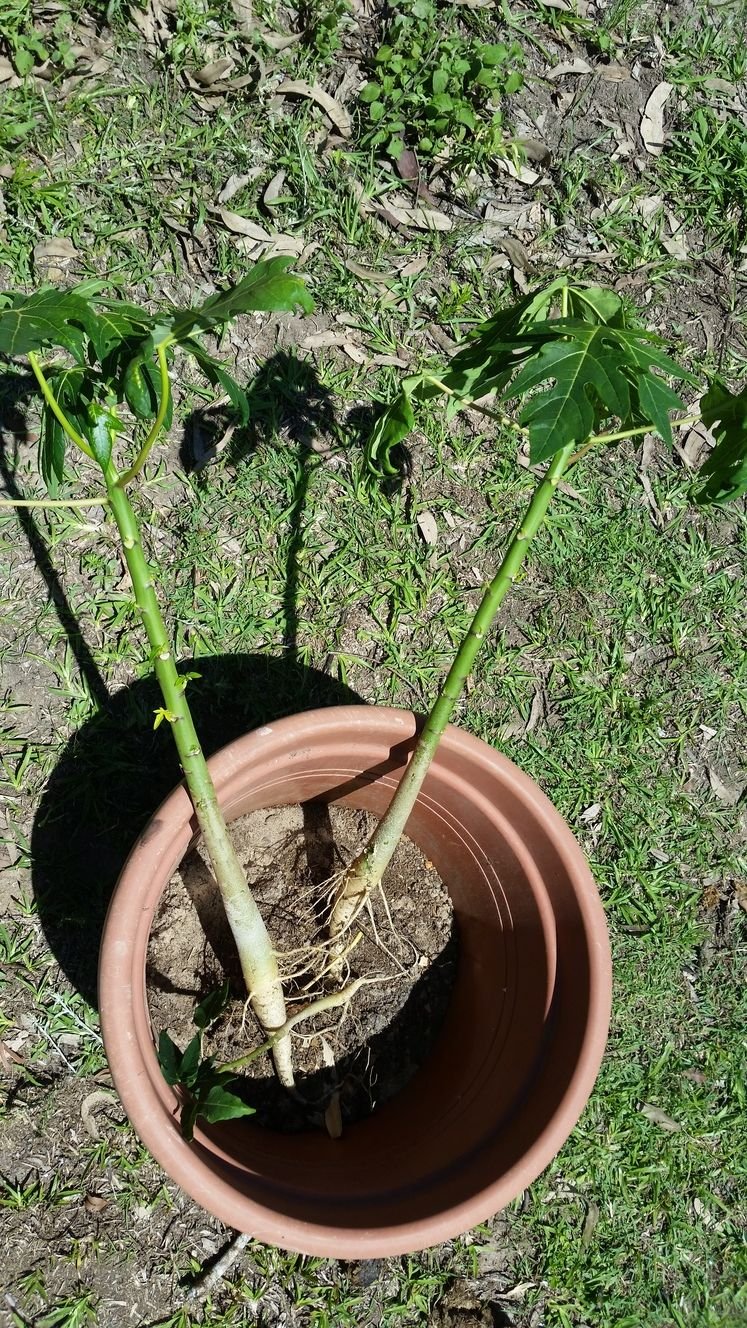
Enough For One Day
Recently I've not been using suncream. I've grown uncomfortable with placing goo on my skin that gets absorbed into the body. Having an office job means that I'm usually deprived of natural sunlight so this work I used as an opportunity to absorb some rays without a shirt. It does mean that limiting the sun exposure is required and despite the fact we had the benefit of shade cast by some well positioned trees, it soon enough became evident that I was starting to burn. We put the rest of the work on hold for another day. We're happy with this as it still means we made some progress for the day and we'll return with renewed vigour another time.
I hope you enjoyed our little morning garden maintenance and perhaps some of you will be enthused enough to start something similar of your own!
